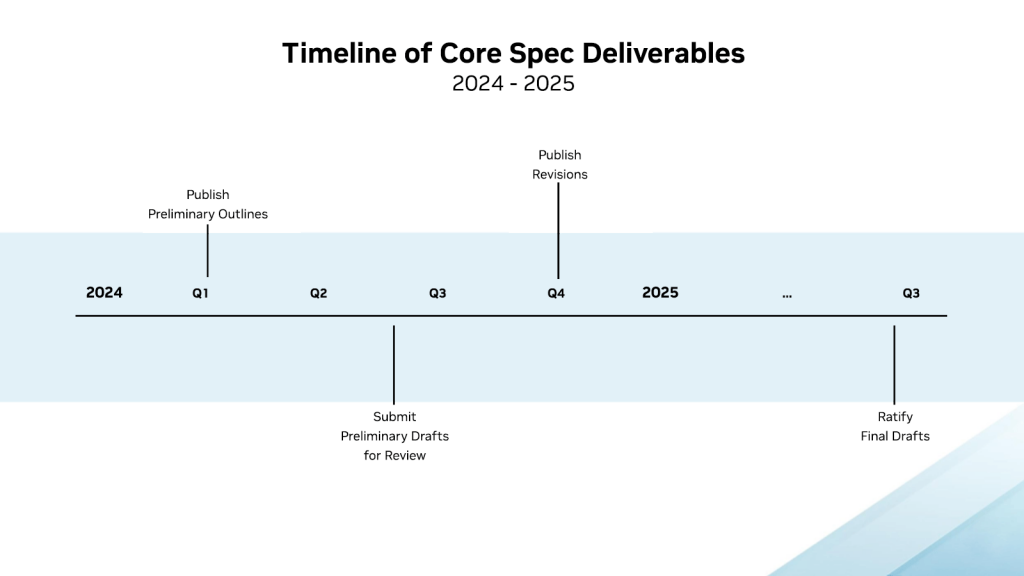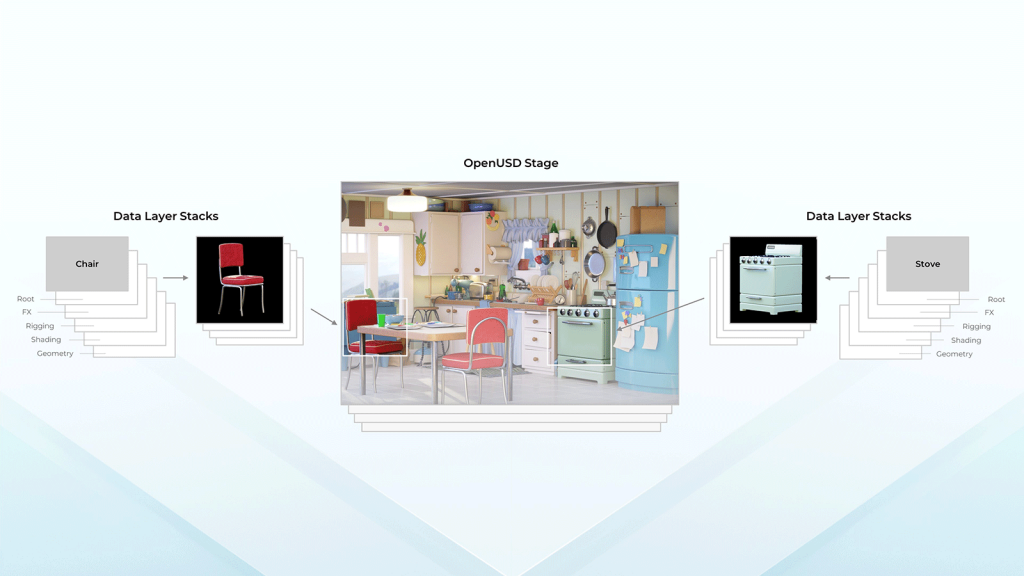This week, the Alliance for OpenUSD unveiled its two-year roadmap “toward becoming a standard,” as well as the addition of 12 new members to its coalition and a new collaboration to help facilitate its goals. The organization laid out their roadmap, which they say will provide the path for them to become “an international, cross-industry standard for interoperability of disparate data types to describe 3D scenes and environments.”
The Alliance of OpenUSD, or AOUSD, was established earlier this summer with Pixar, Adobe, Apple, Autodesk, and NVIDIA as the group’s five founding members, and the Linux Foundation’s Joint Development Fund working to help create the group. AOUSD describes their overall mission as follows:
The Alliance for OpenUSD (AOUSD) is an open, non-profit organization dedicated to promoting the interoperability of 3D content through OpenUSD (Universal Scene Description). Standardizing the 3D ecosystem will enable developers and content creators to describe, compose, and simulate large-scale 3D projects and build an ever-widening range of 3D-enabled products and services. Part of the Joint Development Foundation, the Alliance brings together a diverse and inclusive community of participants to provide an open forum for collaborative development and discussion around OpenUSD.
The group’s roadmap for the next two years is the biggest piece to come out of this, and AOUSD released a blog post to help put their plan into greater context. At a high level, the roadmap lays out the plan to make OpenUSD the international standard for 3D scenes and environments. The first step of that roadmap is to publish preliminary outlines for all specification areas in the first quarter of 2024, and submit preliminary drafts for formal review “around” the third quarter of the same year. From there, they’ll look to publish revisions in the final quarter of 2024, with the ultimate goal of final ratification “around” the third quarter in 2025.

"The AOUSD mission is to promote greater interoperability of 3D tools and data, enabling developers and content creators - including all of us at Pixar - to describe, compose, and simulate large-scale projects and build an ever-widening range of 3D-enabled products and services," said Steve May, Chief Technology Officer at Pixar and Chairperson of AOUSD, in a statement. "The new roadmap shared today shows the progress the alliance is making and unveils milestones and planned expansions over the next year to ensure interoperability and collaboration."
Along with the announcement of the group’s two-year roadmap, AOUSD also announced 12 new members. Those 12 members are: Cesium, Chaos, Epic Games, Foundry, Hexagon, IKEA, Lowe's, Meta, OTOY, SideFX, Spatial, and Unity.
"Building key interoperability for the metaverse will require an industry-wide focus on common standards, formats and protocols. The Alliance for OpenUSD (AOUSD) can help drive the collaboration that's needed to make this possible and Meta is dedicated to this work. Creators, developers and companies will benefit from the technologies and experiences that will be made possible by open standards for 3D content," said Amir Frenkel, VP XR Tech at Meta in a statement.
“We’re proud to be among this cohort of pioneers facilitating USD standardization and evolution in an open forum so that developers can more easily leverage the power of 3D geospatial data,” added Patrick Cozzi, CEO of Cesium and Co-Chair of the 3D Asset Interoperability using USD and glTF group at the Metaverse Standards Forum.
Finally, AOUSD also announced a new collaboration with the Khronos Group. The aim of this collaboration is to “maximize alignment and interoperability between OpenUSD for advanced 3D scene composition and authoring, and Khronos' glTF.” These are two of the most significant file formats in the 3D scene world, so being able to make that seamless interoperability between the two is crucial to unlocking the 3D-focused future that these companies are envisioning.
On this collaboration, Neil Trevett, Vice President of Developer Ecosystems at NVIDIA and President of the Khronos Group said, “This liaison with AOUSD is a landmark moment for the 3D content creation industry. By bringing together the strengths of OpenUSD and glTF, we're not only optimizing the development process but also unlocking new potential for creators and end-users worldwide. This is a true testament to the power of collaboration in driving technological advancement.”
The future many have pictured in which digital life takes place in a 3D environment, whether you want to call that the “metaverse” or something else, is coming along a bit slower than some would have predicted a couple of years ago. To get to that place, something like OpenUSD is necessary. We’ve talked before about the importance of this initiative to get to that place, with some describing USD as the HTML of the 3D internet. Whether or not it can reach that place relies at least in part on large players in the space agreeing on its importance and putting in the work to make it the norm. AOUSD is committed to that goal, and they’ve now outlined a clear path to how they’re going to get there.






